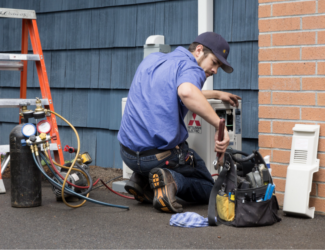
Water main flushing
Water main flushing is the process of cleaning or “scouring” the interior of water distribution mains (pipes) by sending a rapid flow of water through the mains. Distribution mains convey water to homes, businesses and hydrants in your neighborhood. In general, distribution mains are supplied with water by larger transmission lines, reservoirs, wells and/or pumping stations.
Frequently asked questions
Why does the PUD flush water mains?
Flushing helps maintain water quality. The water entering distribution mains is of very high quality; however, water quality can deteriorate in distribution mains if the mains are not properly managed.
This is why flushing is important. Flushing maintains water quality in several ways. First, flushing removes sediments from the mains. These sediments mostly include iron and manganese. Iron sediment results from corrosion of iron pipes and valves used in the distribution system. Other iron sediments result from the change of dissolved iron, which occurs naturally in our water, into sediment form. This occurs in the presence of chlorine and oxygen under certain low flow conditions. Dissolved manganese also occurs naturally in our water and it can be changed into sediments as with iron.
Although iron and manganese do not pose health concerns, they can degrade the “acceptability” of the water through affecting the taste, clarity, and color of the water. In addition, sediments can shield micro-organisms from the disinfecting power of chlorine. Therefore, such sediments could contribute to the growth of micro-organisms within distribution mains.
Finally, flushing helps remove “stale” water. Much of our distribution system is designed with “loops” or interconnected grids, which keep water constantly moving around. However, some areas have dead-ends where water moves slowly and sits for longer periods of time. Such dead-end mains need to be flushed to ensure the presence of fresh water with sufficient dissolved oxygen, disinfectant levels and an acceptable taste and smell.
What will I notice in my neighborhood?
PUD service crews will set up traffic control signs, and they will operate water valves and hydrants. The water flow will be measured and the chlorine in the water will be neutralized. For a few minutes following flushing, some sediment might get into your home’s plumbing. If this happens, please be patient and allow your cold water to run for a few minutes at full velocity. During this time, you should avoid using hot water to prevent sediment accumulation in your hot water tank.
Remember that flushing is aimed at maintaining long-term water quality, but it could result in some short-term deterioration (in case all of the sediment is not removed). If you know about or see flushing operations in your neighborhood, you would be well advised to not use any water during the flushing period.
How often should water mains be flushed?
The PUD’s goal is to systematically flush all distribution mains once every two years. Dead-end mains will be flushed more frequently, depending on several factors, including the number of customers served by the main.
Where does the flushed water go?
Depending on the location, the water may be handled via several different methods: 1) where available, flushed water can be released directly into a sanitary sewer where it flows to a wastewater treatment plant, 2) the water could be released onto surface streets that have storm drains connected to retention/detention facilities, 3) where available, the water could be discharged to wooded areas or open fields, 4) the water could be released to roadside ditches and/or storm drains that drain directly to local creeks or lakes, or 5) the PUD can flush directly into a water tanker truck if no other suitable methods of disposal are available.
Regardless of what method is used, the PUD is determined to dispose of the flushed water in a method that is environmentally sound.
How much water is used to flush mains?
The amount of water used to flush a particular section of pipe depends on a lot of factors, such as water main size, system pressure, the amount of accumulated sediment in the main and the ability to safely dispose of the water. In general, the PUD tries to exchange the water in the main at least three times and at a high enough velocity to remove any accumulated sediment.
How does flushing fit in with water conservation goals?
The PUD is dedicated to water conservation. Water is a limited resource that must be carefully managed to ensure adequate quantities for growing human and environmental needs, including salmon restoration. However, since flushing is critical to maintaining high-quality drinking water, an efficient flushing program is also essential. The flushing program is monitored to ensure that the least amount of water is used. Additionally, the PUD continually analyzes system-wide performance practices to minimize water use, including on-going efforts to identify and repair leaks.
How can I get more information?
If you have further questions, you may contact us 425-783-1000.
Or you may send correspondence to:
Snohomish County PUD
Attention: Water Main Flushing/Water Resources
PO Box 1107
Everett WA 98206-1107






